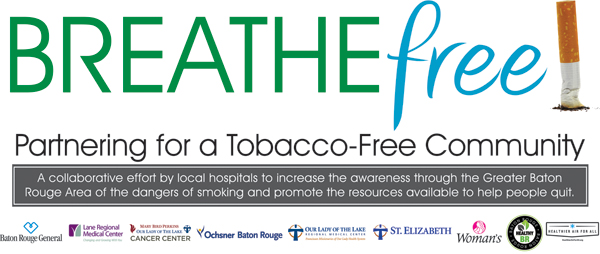Health
Local Hospitals Launch Tobacco-Free Awareness Campaign
Mayor Melvin L. “Kip” Holden has joined with Lane Regional Medical Center and six other local healthcare organizations to raise public awareness about the organizations’ tobacco-free campus policies and to encourage residents to join them in becoming tobacco-free.
The campaign is called “Breathe Free”.
Together with the Mayor’s Healthy City Initiative (also known as Healthy BR), and the Louisiana Campaign for Tobacco Free Living, an awareness campaign has been developed to promote the benefits of a tobacco-free lifestyle.
Participating healthcare organizations include: Lane Regional Medical Center, Baton Rouge General Medical Center, Mary Bird Perkins – Our Lady of the Lake Cancer Center, Ochsner Medical Center – Baton Rouge, Our Lady of the Lake Regional Medical Center, St. Elizabeth Hospital, and Woman’s Hospital.
Mayor Holden and the hospitals are collaborating to send the message that tobacco products pose a serious health risk. Mayor Holden applauded the hospitals for their tobacco-free campus policies.
“We’re proud of our area hospitals for coming together to send a message about the dangers of tobacco use and creating a healthy environment for their patients, visitors, and staff,” the Mayor said.
An estimated 17 percent of adults in East Baton Rouge Parish smoke. In Louisiana, approximately 690 adults die each year due to exposure to secondhand smoke and in an average week, 80 percent of Louisiana residents are exposed to secondhand smoke.
Secondhand smoke is a complex mixture of over 4,000 chemicals, at least 60 of which are known to cause cancer.
For information about tobacco cessation resources, go to www.healthybr.com/breathe-free .
The Mayor’s Healthy City Initiative (Healthy BR) is a coalition of more than 70 partner organizations that communicate, coordinate, and collaborate around Baton Rouge’s greatest health priorities. The coalition has defined the four biggest health priorities as: obesity, HIV/AIDS, mental and behavioral health, and overuse of emergency rooms.



0 comments